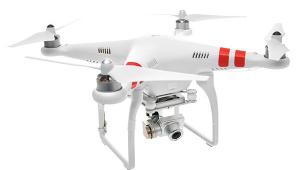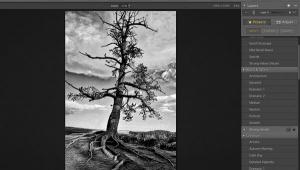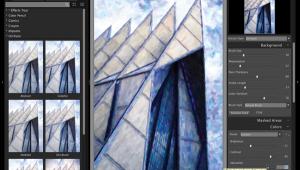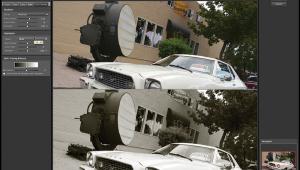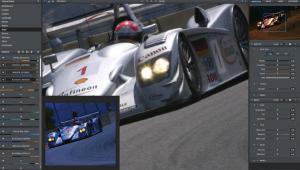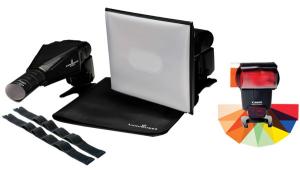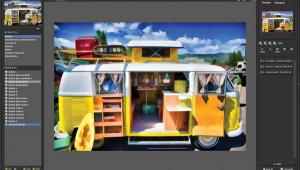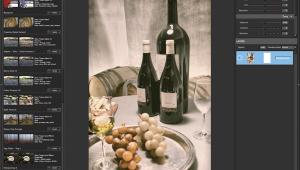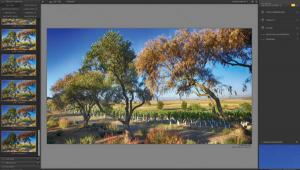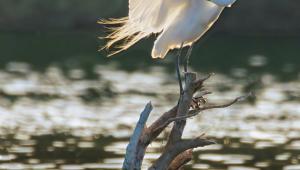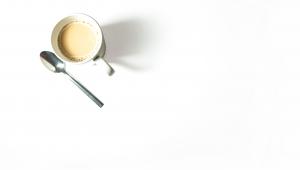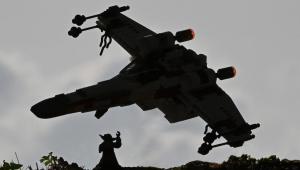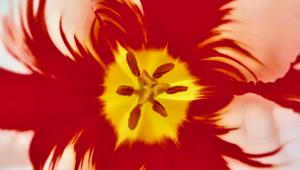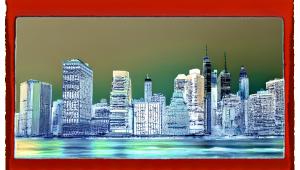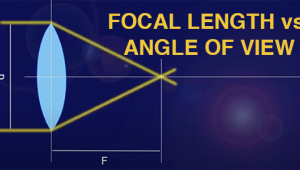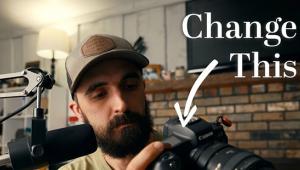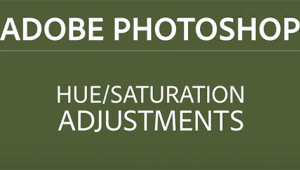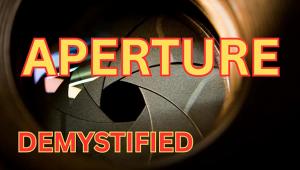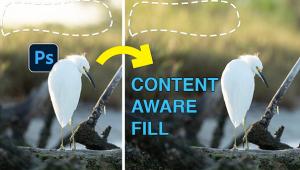Digital Innovations
Take A Creative Break, Today
"You miss 100 percent of the shots you never take."--Wayne Gretsky Back in the Cretaceous era while studying photography at the Maryland Institute of Art, I was privileged to have Jack Wilgus as an instructor. One of my fondest memories of Wilgus was his facetious comment about how some of the best photographs were made by students in the break room. Not real photographs, mind you, but all of those comments from my erstwhile colleagues about the great photographs they were going to make--someday. While some of those images may have actually gotten made, I'll bet few of them actually produced the photographs that they talked about so excitedly and Wilgus' comments echo with me today. Photographers, both amateur and professional, often get so wrapped up in what they have been doing that they forget to explore the new directions that attracted them to the art form in the first place. We digital imagers, for example, can spend so much time being mesmerized by the pixels on our computer monitors that we often forget to make time to create some new photographs. I think it's a good idea to not only take time to smell the roses but photograph them as well. |
|||
Make yourself a promise that this week you'll go out and make some new images. Pick up a roll of film from Agfa, Fuji, Ilford, or Kodak that you haven't used before then stick a lens on a camera--it doesn't matter which one or which kind--and take your best shot. Digicam users should erase all of the old pictures that are filling their Com-pactFlash cards. You know, that ones you've already transferred to an Iomega Zip 250 disk, then go out and show The Great One how right he is. It doesn't matter how you capture your digital photographs, whether by scanning existing prints and film or capturing new images, don't be afraid of "making a mistake." The only bad picture is one you don't make and sometimes you'll find that in even the most mundane image lurks the potential for a great digital image. Let me explain what I mean. The Digital Masterpiece. I take the somewhat unconventional view that truly great images--digital or otherwise--need little manipulation to extract their greatness. You can adjust brightness or contrast, dodge and burn using all of those traditional darkroom manipulations to make a photograph memorable, but sometimes more effort is needed. Great digital images begin with mundane images, ones whose potential needs more than a little coaxing to be unleashed. |
|||
One of the joys of digital imaging is that you can get much quicker feedback. When I was at Maryland Institute, Wilgus would send me back into the darkroom 10 times (no kidding) to make a print darker, then when I presented him with the 11th print tell me "it's too dark, I liked the last one better." Traveling at the speed of digital manipulation encourages experimentation, which means that your shooting ratio of "ins" vs. "outs" just got better. While in Cancun, Mexico, I had a chance to visit the Mayan ruins at Tulum. My tour group got to the site near midday and after listening to the guide's remarks had only 30 minutes free time to explore and make photographs. I loaded my Contax G1 with Agfa ISO 200 color negative film and used a 45mm lens, but there was no color to be found anywhere. The brightly lit ruins were black and white with dashes of gray and while the blue Caribbean sky was post card perfect, the photographs lacked, shall we say, panache. I digitized a few of them using Kodak's Photo CD process and started by playing with one that showed a corner of an ancient building. The goal was to add color and mood but before doing that, I sharpened the image using the nik Sharpener Photo-shop compatible plug-in. Then I used the Midnight Blue filter that's part of the nik Color Efex package that was a previous Plug-in of the Month selection. You can learn more about both products and even download demos at www.tech.com. |
|||
nik.com I adjusted the sliders in the Midnight Blue control panel to produce the kind of mysterious, nighttime effect that was lacking in the original image, but something was still missing. A moon. I added a digital "moon" using Photoshop's built-in Lens Flare plug-in, a trick I learned in a story by Rick Sammon that appeared in the premier edition of eDigitalPhoto.com magazine. I printed the finished photograph on Epson's warmtone Commercial Matte Proofing Paper using an Epson Stylus Photo 1270 printer to produce the final image. It may not be a masterpiece, but it's much better than the original and it captures the mood of the place. Jobo Goes Digital In A Big Way. Like many people, I've always associated Jobo Fototechnic with traditional imaging tools, but the company has gotten serious about digital with several products aimed at high-end image capture. Last year they unveiled the Jobo proScan 10500, a 4x5 digital scanning camera back with a resolution of 10,500x13,100 pixels. Their Jobo ImageScan 8000 camera back includes many of the features of the proScan 10500, but has a resolution of 8000x10,500. Both models use a high-end, three line CCD element to permit image one pass capture, and a fast SCSI II interface provides high-speed transmission of data from the back to your computer. Now, Jobo has announced a series of high-end digital capture backs that are designed for medium format cameras. The proFile 4000, proFile 6000s, and proFile 6000 are designed to let professional photographers capture live action shots, and two models offer multi-shot capability when more resolution is needed. The proFile 4000 is a single or multi-shot four-million pixel (2000x2000) back; the proFile 6000s is a single-shot six-million pixel (3000x2000) model, while the top-of-the-line proFile 6000 features single or multi-shot at six-million pixels. The proFile 6000 captures 18MB files in 8-bit instant or multi-shot modes, or capture 36MB files in 16-bit mode. All of the proFile backs attach to medium format cameras using an adapter that is available separately for cameras such as the Fuji GX680, Mamiya 645PRO, RZ67 PRO-II, or Hasselblad 553ELX/503CW, with new adapters under development. The proFile backs start at $19,995 and go up to $27,990, with camera back adapters, priced at $995. For more information, visit the Contact area of Jobo's web site to at: www.jobo-usa.com. Attention Photoshop Users! When working with Adobe Photoshop, I'm often reminded of what my friend Carl Milner said the first time he saw the program 10 years ago. "This isn't software," he exclaimed, "it's a life's work." There are so many nooks and crannies in the program that, as I explained in last month's column, I'm constantly finding new ones. Whether you work or play with Adobe Photoshop, I suggest that one of the best ways to maximize your knowledge and enjoyment of the program is by becoming a member of the National Association of Photoshop Professionals. Their bimonthly publication Photoshop User is almost worth the $99 cost of membership. NAPP has a members-only web site, Photoshop Online, that provides discussion groups, live chats, tips and techniques, as well as downloads of plug-ins and actions. I recently downloaded a Photoshop Action called Shadow Lifter that's designed to soften and lighten shadows in digital images. It helped me when working with some troublesome Photo CD scans of overdeveloped film and not only fixed some of my lighting problems but did an amazing job of minimizing grain as well. If you have questions or problems, the NAPP Photoshop Help Desk is available to assist you. Membership entitles you to discounts from several prominent mail order hardware and software dealers. The organization sponsors an annual Photoshop World convention that's a great place to meet people, attend seminars, and visit trade show booths full of products that are of interest to digital imagers. For more information, contact NAPP at: www.photoshopuser.com. New Plug-Ins. Sapphire Innovations recently announced an update of Innovations 1, which was originally an eight plug-in set for Photoshop and compatible programs, and now includes 21 plug-ins. The updated set includes opArt, displacement, color, edge, emboss, and shift effects as well as slicing, color shift, wavy, blur, mesh effects, and others. As you can tell by the illustration, each plug-in features a huge range of options and settings in their control panel. Purchasers of the original set get a free upgrade to the new version and sampler plug-ins are available on the i-us.com web site and at: www.sapphire-innovations.com Innovations is available for Windows NT, 95, 98 and is priced at $39.95. New Digital Camera. Olympus America Inc. announced the C-3000 Zoom, a 3.34 megapixel (2048x1536 pixel resolution) digital camera that has a $799 price tag. The C-3000 Zoom offers most of the features of Olympus' C-3030 Zoom, including a 3.34 megapixel imaging chip; USB connectivity; QuickTime movie capability with sound; 3x aspherical glass zoom lens with 2.5x digital telephoto; and 15 resolution options, including five uncompressed TIFF modes. The camera has a six-mode built-in flash and with the use of a TTL cable, accepts the optional Olympus' FL-40 flash. For shooting black and white images, the C-3000 has black and white and sepia modes along with a Blackboard/Whiteboard Mode, where appropriate exposure settings are automatically selected for capturing text and ensuring clear, visible writing on the images. The ISO equivalent film speeds of 100, 200, and 400 are user selectable; and longer, slower shutter speeds are available up to 16 sec in manual mode. The QuickTime movie mode allows users to capture 15 sec of video at 160x120 resolution (15 fps) or 60 sec at 320x240 (15 fps). Sound can be recorded when capturing video footage, or a 4 sec sound byte can be recorded separately for play with a single image. The camera includes a 8MB Olympus SmartMedia card; remote control; two CR-3V lithium batteries; lens cap; strap; USB and serial cable for Windows and Mac OS users; video connection cable for TV or VCR; and Olympus Camedia Master 2.0 Utility Software for downloading images. For more information, contact Olympus America at (800) 347-4027 or visit www.olympusamerica.com/digital. A Digital Loupe. Recently I got an e-mail from noted nature photographer, and all-around good guy, B. Moose Peterson. He asked me if I had ever heard of any software that detects sharpness. "I'm looking for something that I could put over the eye of the subject," he told me, "press a button and the computer tells me if the image is sharp." In looking around at my favorite shareware web site (shareware.cnet.com), I found Loupe 1.41 for the Mac OS. While more magnifying glass than loupe, it might be worth a try. Design Tools Monthly (www.design-tools.com) featured a similar Macintosh tool called Zoom Lens in one of their monthly disks, but I have not been able to find it through any of the usual shareware sources. If anyone knows of a similar utility for Microsoft Windows users, like Peterson, please let me know at editorial@shutterbug.net. iPIX Pro-Digital Fisheye System For Canon EOS And Nikon. Internet Pictures Corporation announced the availability of their iPIX Pro-Digital Fisheye System. It consists of a 4.8mm f/5.2 fisheye lens and iPIX Professional Rotator bringing immersive image capture to a broad range of new generation 12-bit/pixel professional digital cameras. At the heart of the system is the iPIX Pro-Digital fisheye lens, currently available in Nikon F and Canon EOS mounts, providing 185 of coverage. This lens is supposed to provide the kind of image quality for which film was typically used. In addition to its 185 coverage, it features uniformity of illumination to minimize visible seams, low flare, consistent image resolution across the aperture, and excellent sharpness. The lens would seem ideal for professional immersive photography applications such as advertising, e-commerce storefront content, photojournalism, sports or entertainment events, hospitality and lodging showcases, crime scene capture, industrial site documentation, and corporate education or training. The iPIX Fisheye System has a list price of $4995, and is targeted toward professional photographers using high quality professional digital cameras such as the Nikon D1 Digital SLR, Kodak DCS 420/520/620 and 460/560/660 series cameras, Canon EOS D2000, D30, and Fuji FinePix S1 Pro Digital camera. For specifications, see the iPIX Pro-Digital Fisheye System sidebar or visit the Internet Pictures Corporation web site at: www.ipix.com. More DPI! Lexmark's new Z52 Color Jetprinter is the first to offer 2400x1200dpi output in black and color for all types of paper. Priced at under $200, the Z52 offers Mac OS and Windows connectivity through its built-in parallel and USB ports. The printer produces an output speed of 15 ppm (pages per minute) using black ink and 7 ppm in color. When printing photographs, a separate photo cartridge is required to produce six-color photo-realistic output. When not printing photos, you can use the Z52 Color Jetprinter to print dual sided pages. It does this by printing the odd numbers first, then the even numbers on the other side--after the paper has been re-fed. For more information on this or any of Lexmark's other printers, visit their web site at: www.lexmark.com. iPIX Pro-Digital Fisheye
System Technical Specifications |
- Log in or register to post comments




